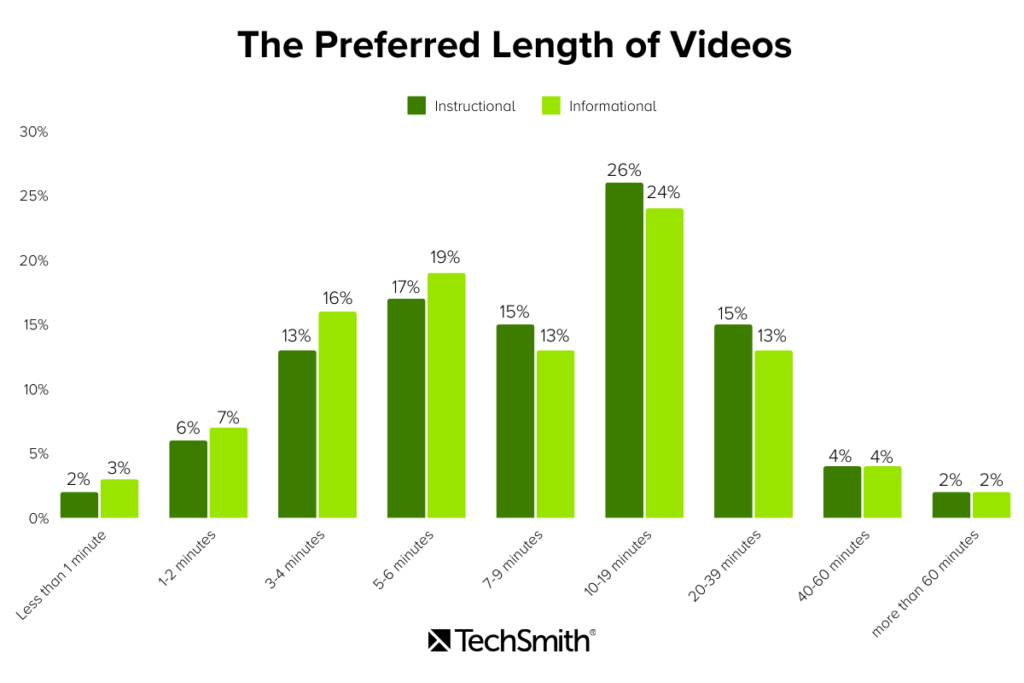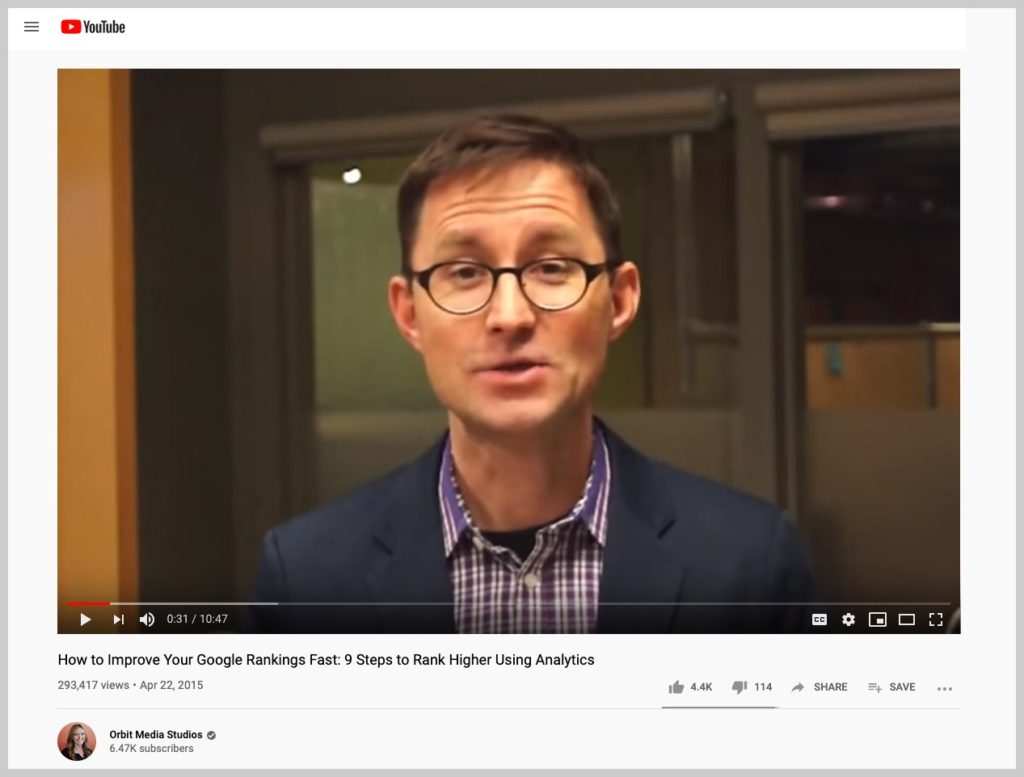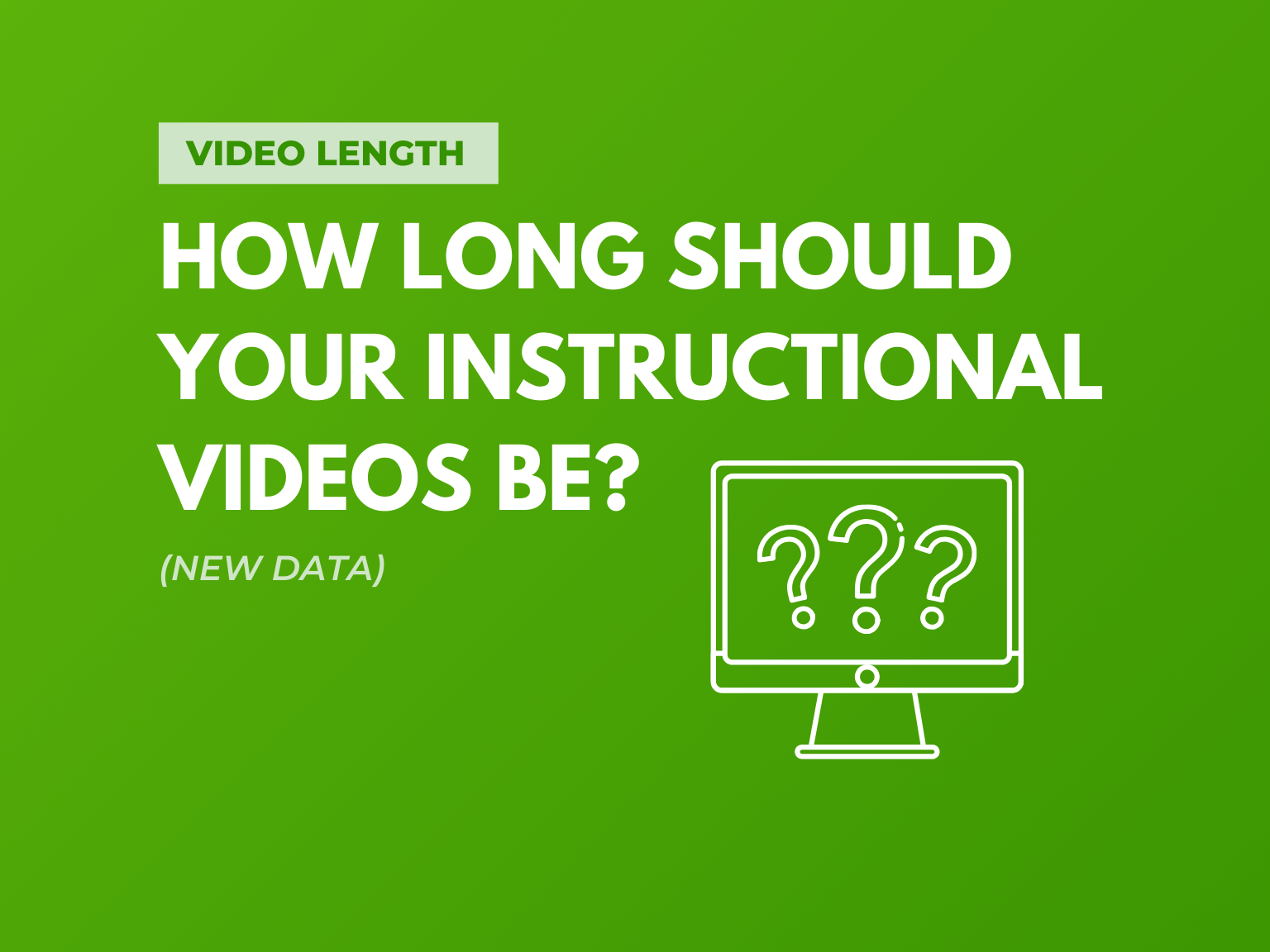We get the question all the time: “What’s the ideal length for a video?”
It makes sense. Grabbing and keeping a viewer’s attention is challenging, and creators want to be sure they aren’t making videos that are too long (or short).
The thing is, there is no ideal length for all videos — no one video length to rule them all.
But, viewers definitely have a preference.
How long should instructional videos be?
And when we analyzed over 50 of our tutorials to measure our videos’ engagement and found that the average length of our tutorials is 3:13.
Ultimately, the ideal length of a given video is determined by the content and the target audience. The optimal video length for a YouTube video is different than a Facebook video.
Every video has its own perfect length. Sometimes you need a long video. Other times you need a short video.
The key is finding the sweet spot.
But that doesn’t mean there aren’t ways to ensure each video you make is the right length.
Make videos your viewers crave
Discover the secrets of what your viewers truly want in your training and instructional videos.
Get the Full Report
Video success isn’t determined by length
The default answer you hear about video length is that shorter is always better. And, while that’s a good notion to keep in mind, it’s not quite gospel.
And have research that backs it up!
Our recent study “The 2024 TechSmith Video Viewer Trends Report” found that more than 30% of people preferred a video length between three and six minutes.
That’s not really surprising — and it’s in keeping with the notion that shorter is better.

But, that’s not the whole story. The next highest preferred length was for videos in the 10-19 minute range. This strongly suggests that people will watch longer videos if the content is what they’re looking for.
The verdict? People will watch longer videos, and they’ll even identify them as “great.”
So, if video length isn’t the best way to determine whether your video will be successful, what is?
Content is (still) king
Coming at your video with a length in mind is, in many ways, putting the cart before the horse.

Think of it like cooking. The amount of time you need depends on what you’re making. You can’t make a homemade baked lasagna in 10 minutes and you don’t need three hours to make a box of macaroni and cheese.
The dish determines the length of time it takes to cook.
Similarly, your content should inform the length of your video.
Before creating any piece of content (not just video), ask yourself two questions:
1. What do my viewers need to know?
2. How can I best cover this topic in the most efficient and useful way?
Then, create a video that does that. That may seem simplistic, but using the tips and information highlighted in this post, you can turn those questions into a winning formula for determining the best length for your video.
 Recommended Reading: The Ultimate Guide to Easily Make Instructional Videos
Recommended Reading: The Ultimate Guide to Easily Make Instructional VideosLearn to right-size your videos
When we ask about the perfect video length, what we’re really asking is, “How can I keep my viewers’ attention long enough to give them the information they need?”
We all know attention spans are shrinking, but that doesn’t mean it’s impossible to keep someone watching.
Turns out good content is still effective — we just have to provide it!
So the first step in keeping your audience engaged is to know what they’re looking for. You want to know these things:
- Who is my audience?
- What problem are they trying to solve?
- What are their goals?
- What will they need from me to accomplish those goals?
- What is their skill level?
Then, figure out the goal for your video based on the answers to those questions. How can you address them most effectively and efficiently?
 Recommended Reading: 5 Questions to Help You Make Better Customer Education Content
Recommended Reading: 5 Questions to Help You Make Better Customer Education ContentDon’t try to do too much
When you know what your audience needs and how to address it, you can plan your video accordingly.
But be careful. If you’re anything like me, when you have something you’re excited about, you want to talk about it at length. To everyone.
It can be the same with your content. You’re excited to share your knowledge, so it’s natural to want to share ALL of it. But remember, you want to create a video that addresses a specific problem or topic. Make sure you create a video that does that and nothing more.
That doesn’t mean the other information isn’t important. It just means that you’ll want to share other information with other videos. No one ever said you had to make just one video. Make as many as you need to address as many topics, problems, pain points, etc. as necessary.

How to get their attention (and keep it)
So, now you know that video length isn’t the reason people stop watching videos. But, how do you keep them watching? Give them what they need and expect.
People stop watching a video because they didn’t get the information they expected. Whether your video is a minute long or 30 minutes, if your viewers don’t get what they came for, they will click away.
Be sure your video’s title accurately describes what your viewers will get when they watch. It’s tempting to use click-bait to get people to watch, but what good is that if they drift away after 30 seconds? And, once you’ve burned them, they’re much less likely to come back for more.
Additionally, here are a few things to keep in mind if you want to grab and keep your audience’s attention:
1. Be interesting
Use storytelling techniques and/or an engaging speaker/voiceover to help even dry topics seem less boring. You can also try adding some personality to your video by featuring a real person speaking.
Include practical, real-life examples your viewers can easily apply and be sure to make extensive use of good visuals like images and icons to illustrate your concepts.
2. Be funny
Who doesn’t like to laugh? Humor can be a great asset to keep viewers engaged and entertained. But, be careful of being silly or too off-the-wall, which can make your content seem less useful.
Also, be wary of humor for international audiences. What may be funny in one culture can be bland (at best) or offensive (at worst) in another.
3. Use plain language
Use familiar, everyday language in your script. One of the biggest mistakes we make when we’re trying to teach a new concept or show someone how to do something is using language terminology, or jargon that is unfamiliar to the audience.
Using big words and long, drawn-out sentences may seem scholarly, but it can come across as pompous, out of touch, and even just confusing.
Bonus tip: Video quality isn’t a game-changer!
One thing from our research that may surprise you about keeping and engaging viewers: Video quality was not a common reason for viewers to stop watching a video.
In fact, only about 5% of viewers listed poor video quality as the main reason they stopped watching a video.
Take this example from Andy Crestonia from Orbit Media:

This video is a great example for a few reasons:
- The audio quality is solid
- The video quality maxes out at 480p
- At five years old, the video still ranks well and has nearly 300,000 views!
Remember, good content trumps perfect production. You don’t have to be a video pro to make great videos.
There’s no such thing as the perfect video length
Video creators spend a lot of time wondering if their video is the right length.
While video length IS an important consideration for creating great instructional and informational videos, the real question to ask is, “How can I best cover this topic and drive value for my viewers?”
Then, plan your video to achieve that specific goal.
Make videos your viewers crave
Discover the secrets of what your viewers truly want in your training and instructional videos.
Get the Full Report



Share